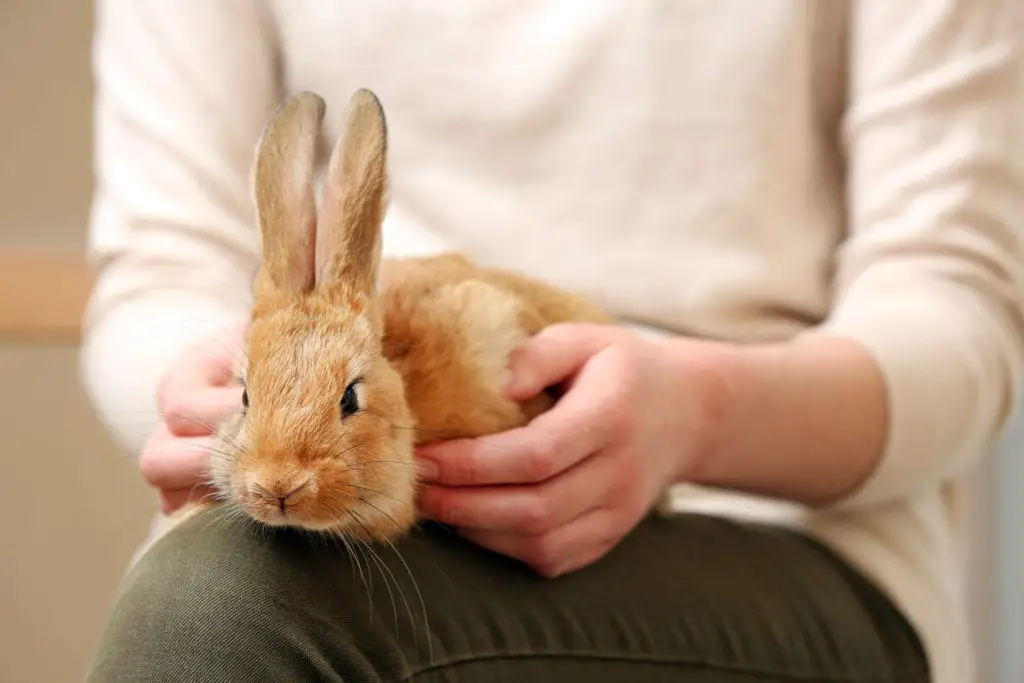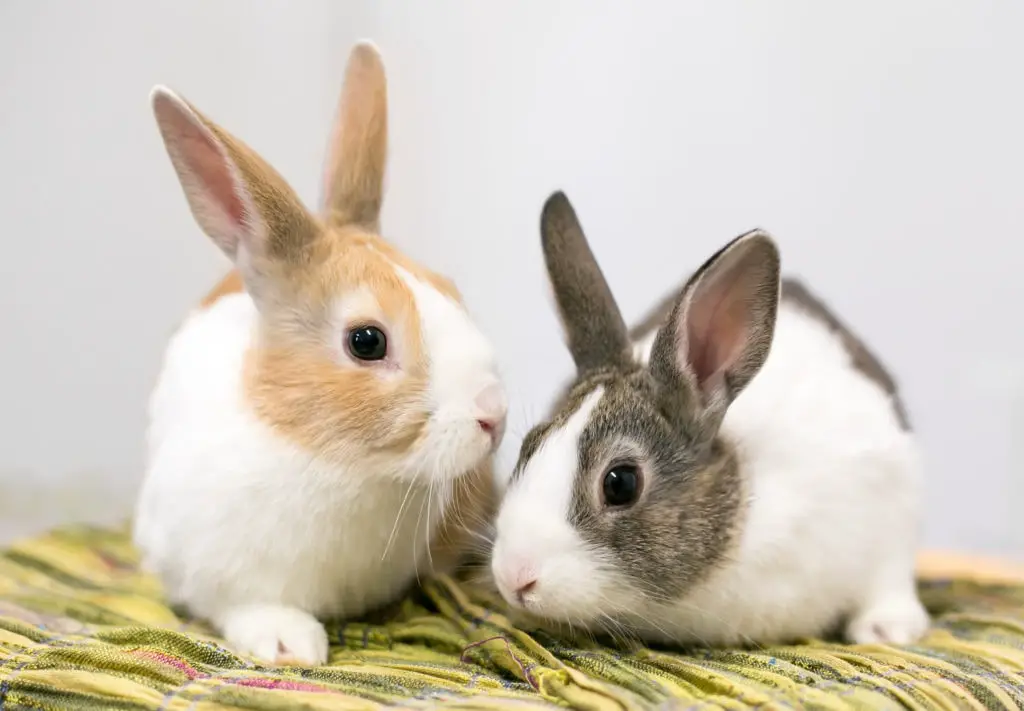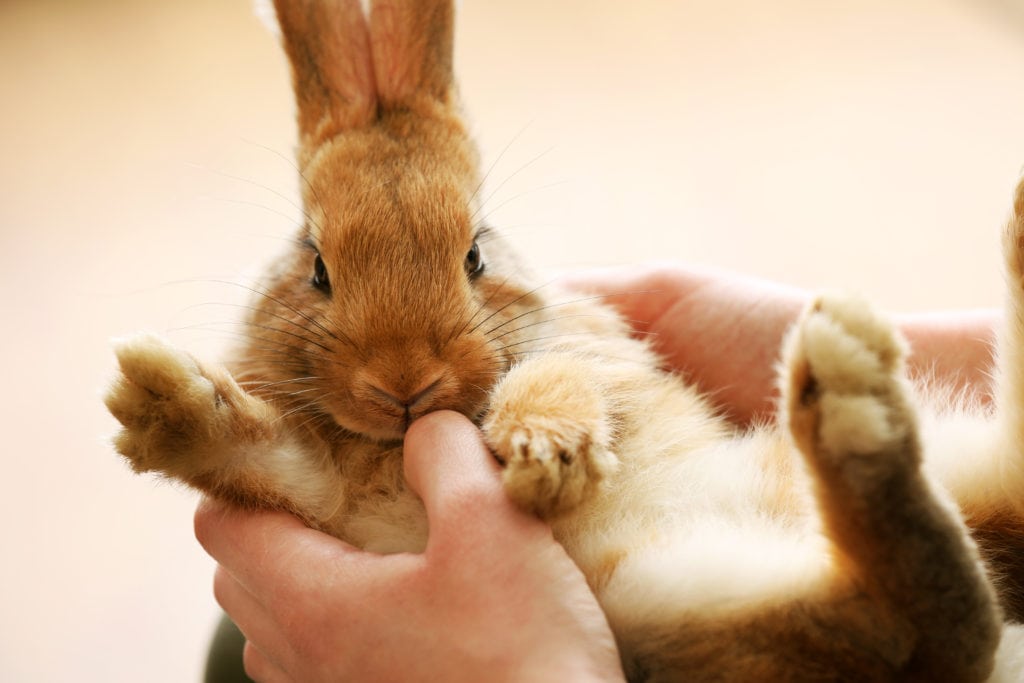
Rabbits are prey animals and when a large human tries picking them up all of the time, they may feel threatened. It can be traumatizing for the rabbit, but that’s no reason to think your rabbit doesn’t want to be loved.
It takes a while for a rabbit to comprehend that he or she is in a comfortable place and understand that you’re not a threat to their safety. Rabbits bond with their owners through a gentle tone and soft touches.
Though your rabbit may be frightened now, there are many ways to adjust that behavior and make them feel more comfortable and come to know you as their caretaker.
1. Have a Routine
As stated earlier, rabbits are prey animals, so they are easily frightened by new elements, people, and changes in their surroundings; there are many different aspects that can cause a rabbit to be fearful and only come to you for food. A great introductory video can also be found on YouTube. In order to redirect this behavior and help them to overcome that fear, you need to develop a routine that makes them feel comfortable from the start. In order to do so, follow these steps:
- Find a feeding routine that involves consistency and something that is both nutritious and familiar to them. Even just starting this step will have them feeling more calm and expectant of the times you come in.
- If they’re in an enclosure and you want to take them out, make sure that it’s a regularly scheduled exercise or playtime that won’t disrupt their routine and something they can look forward to doing with you.
- Introduce yourself to your rabbit at designated times. You should not be petting and bothering your rabbit while they are eating or trying to sleep. Your rabbit needs to know that it will also be allowed to have some alone time in order to get used to you being around. In fact, quality sleep is very important to your rabbit for many reasons. See my article Helping Your Rabbit Sleep at Night: A Simple Guide for more help with ensuring your rabbit is getting quality sleep.
2. Learn Your Rabbit’s Body Language
Every animal is different when it comes to its body language, and rabbits are no different. Watch closely as to how your rabbit reacts to new toys or places. Are they fearful, such as cowering and hiding, when being in a new environment, or do they get the zoomies and run around as if they own the place?
Learning your rabbit’s body language will help you to learn how to treat them when you introduce them to new places or people. I wrote a very in-depth guide that will help you understand how your rabbit communicates with you here.
It’s almost always best to take things slowly and allow your rabbit to adjust to everything around them when they feel ready. It may take a while for your rabbit to feel safe and allowed to be themselves, but once they are comfortable you will notice an adjustment in their body language and behavior.
3. Use Your Inside Voice

Rabbits are sensitive to noises and smells, and that is why it can take a while for your rabbit to feel comfortable in its new surroundings and even you because everything is suddenly strange and unfamiliar. To them, smells are pungent and they can hear things that humans can’t perceive, which can be extremely startling for them.
After a period of time, your rabbit will adjust to your level of noise and get used to your smells, as they will be living with you consistently. When there’s a loud person in the room, rabbits will not approach them and will often hide because they don’t feel comfortable and are frightened by loud noises and raucous behavior. In truth, it is best to speak softly and keep your bunny in a gentle and soothing environment to help them feel safe.
4. Give Your Rabbit Places to Hide
When your rabbit doesn’t feel safe or has a feeling of being overwhelmed, they need a place that is their own where they can get away from everything.
Some great ideas of places for them to be able to hide are just empty boxes, pet houses that can be purchased from a pet store, or even under the furniture if that is somewhere you feel comfortable allowing them to be. Don’t chase after your rabbit if they are feeling a sense of fear, allow them to go hide until they feel safe enough to approach you again. Their hiding places are just for them and should be a place where they know no one will bother them.
5. Avoid Cornering Your Rabbit
As it is for any person with a new animal, all we want to do is cuddle and squish them with all of the love we have for them. However, this is not a great way to introduce yourself to your new friend.

When your rabbit jumps for your lap and hops away, it is best to allow them to get away for their own personal space. Do not impede on their personal space and force them to be held, that will only make them more uncomfortable. Instead, choose to stay put, allow them to smell around, and when they are done, they will come to you for pets and affection.
DID YOU KNOW? Having “lap time” with your rabbit is actually a fantastic way to bond. But it’s only going to work if your rabbit feels comfortable enough to stay in your lap. To figure out how to do that, see my article How to Train a Rabbit to Jump on Your Lap (Six Steps).
6. Respect Your Rabbit’s Boundaries
Just as any other animal, rabbits also have boundaries when it comes to being picked up and handled or interrupted during eating, resting, or playing. Your rabbit doesn’t want to be constantly picked up and cuddled because s/he is more independent than you would think. If your rabbit only comes to you when you hold out food, it is because you are training it to think that is all you have to offer. A great forum that can help you along is Binky Bunny.
Rabbits need to be allowed to be themselves when it comes to wanting to be around you. Introduce yourself slowly at first, allow them to recognize your presence in their personal space. Instead, sit on the floor and allow them to come to you when they feel safe enough to explore you. Don’t startle them by constantly petting them or putting your hand in their face, instead sit still at first, and then allow them to come to your lap for pets. They are loving pets, and once they are adjusted to your smell and gentle tone, they will be your best friend in no time.
Want to Show Your Rabbit Some Affection?
Sharing affection with your rabbit is a great way to bond tighter together. But rabbits may be a little different with how they receive affection than you might think. In general, you need to go slow and allow your rabbit to retreat if he or she wants. I have put together a list of some really practical ways you can show your rabbit affection in my article How to Show a Rabbit Affection: 8 Simple Tips.
